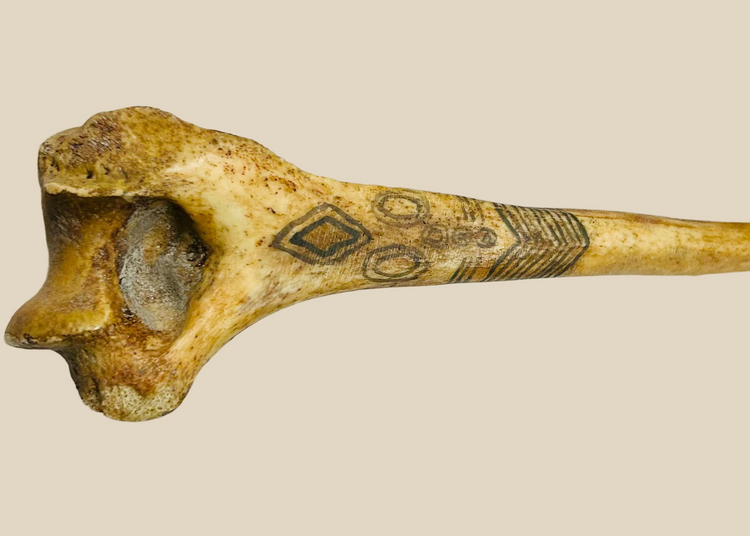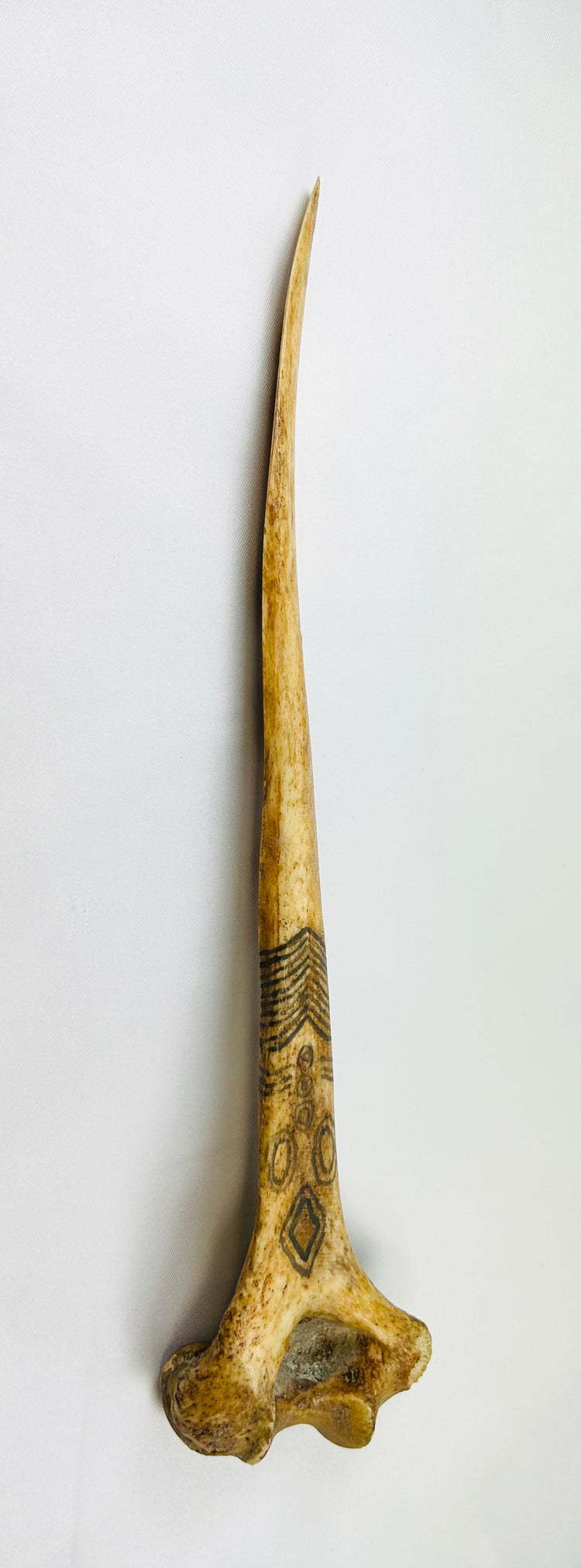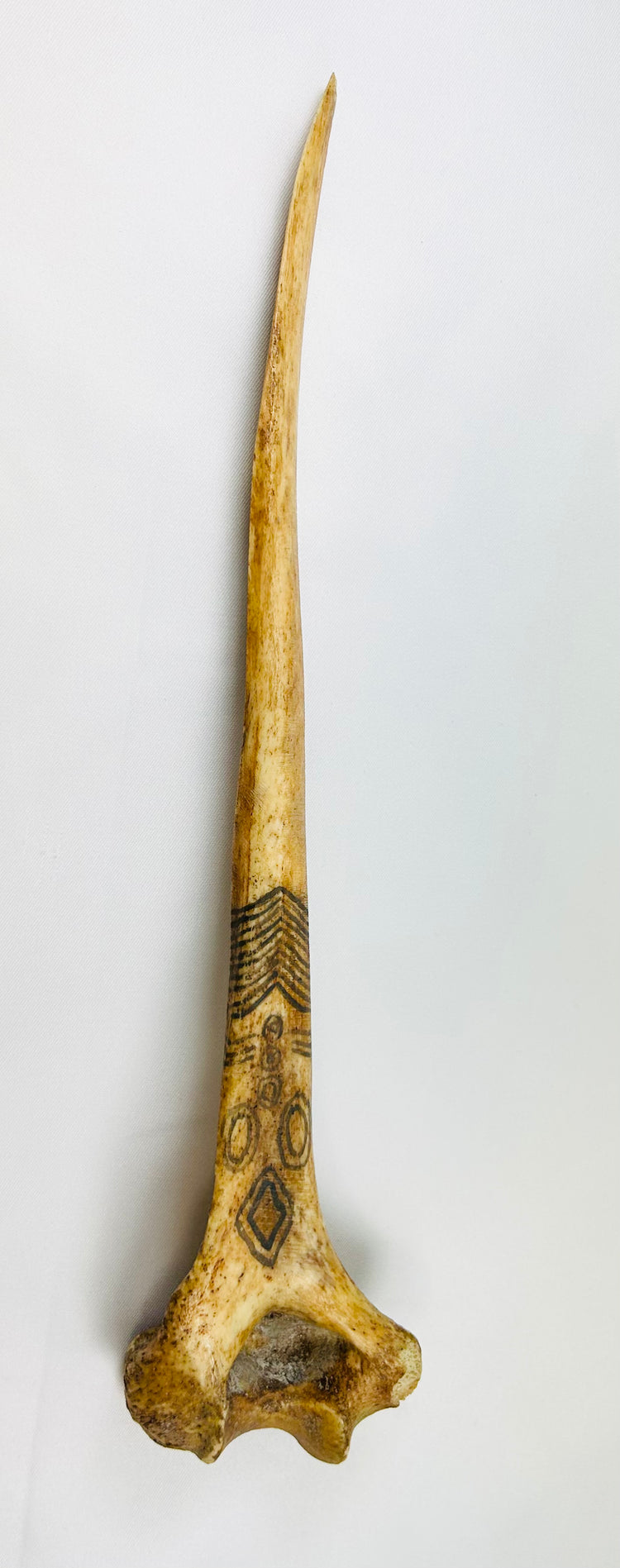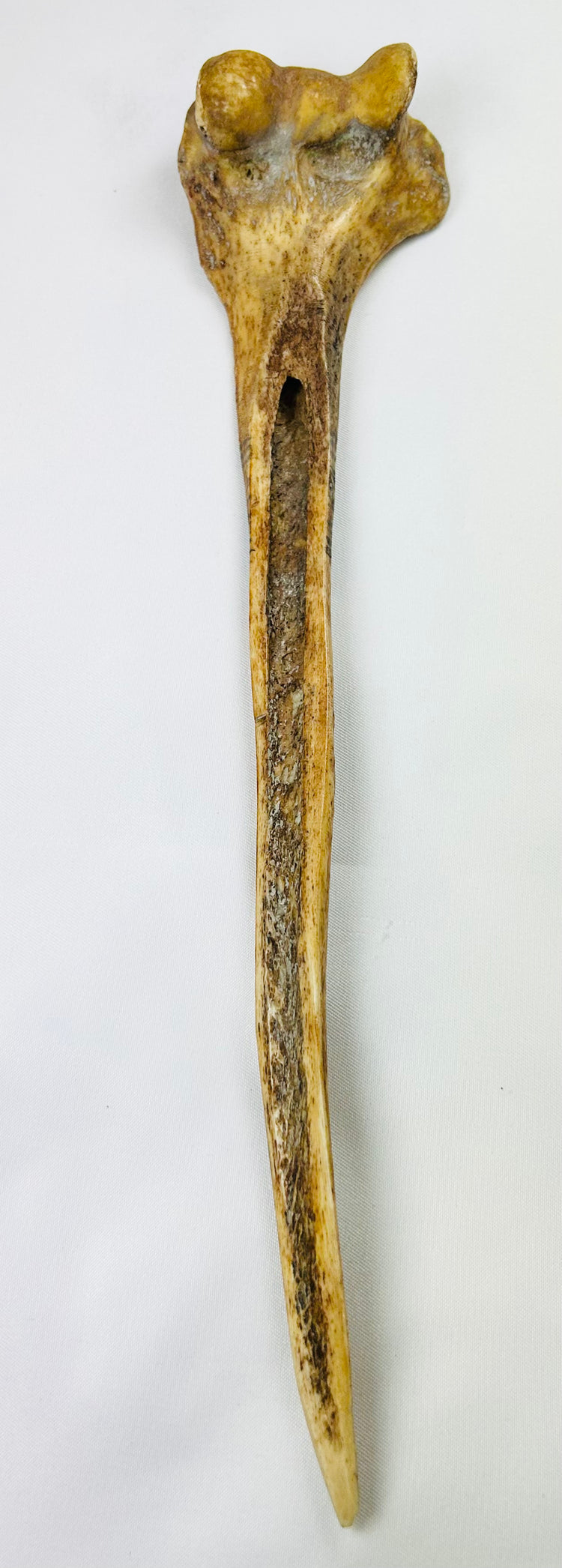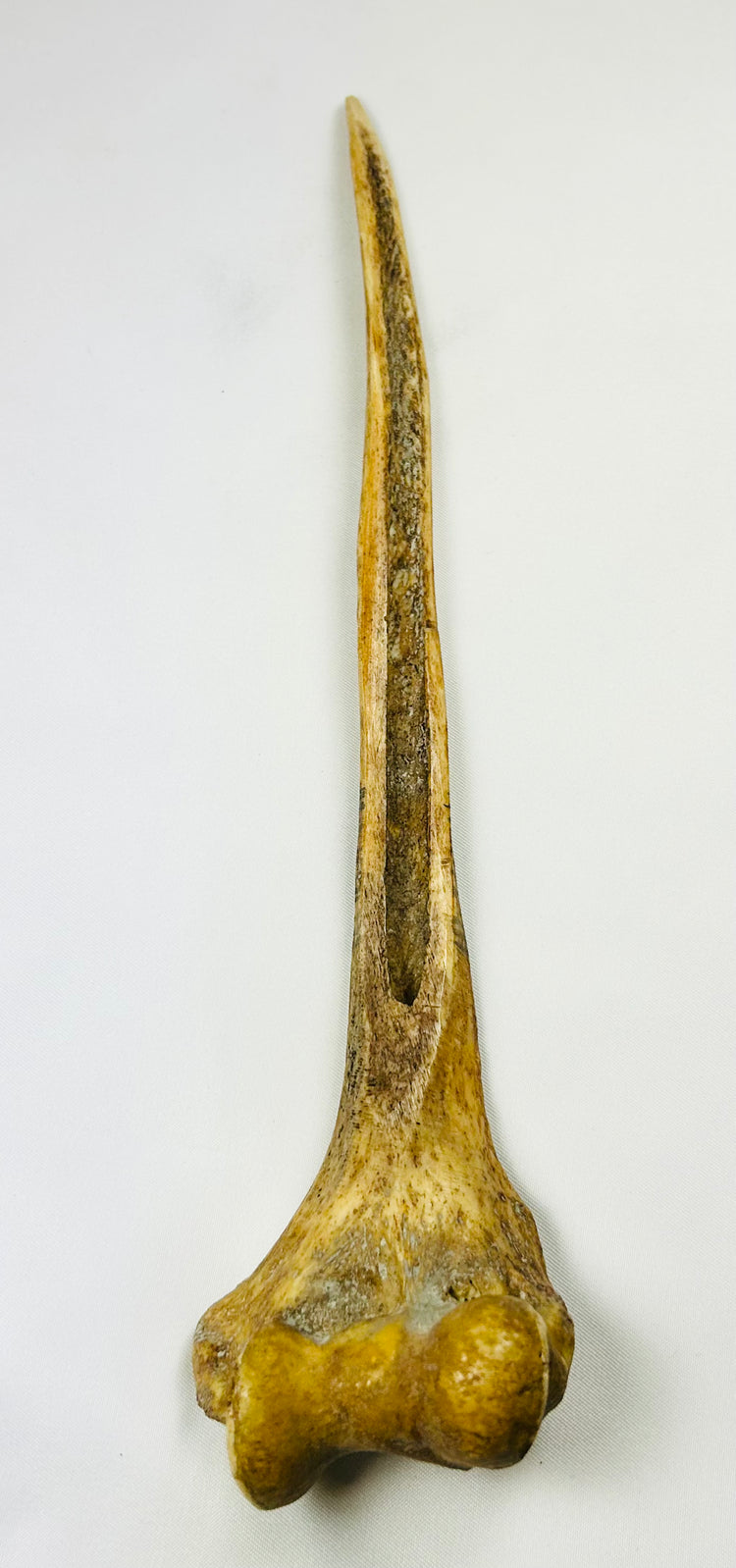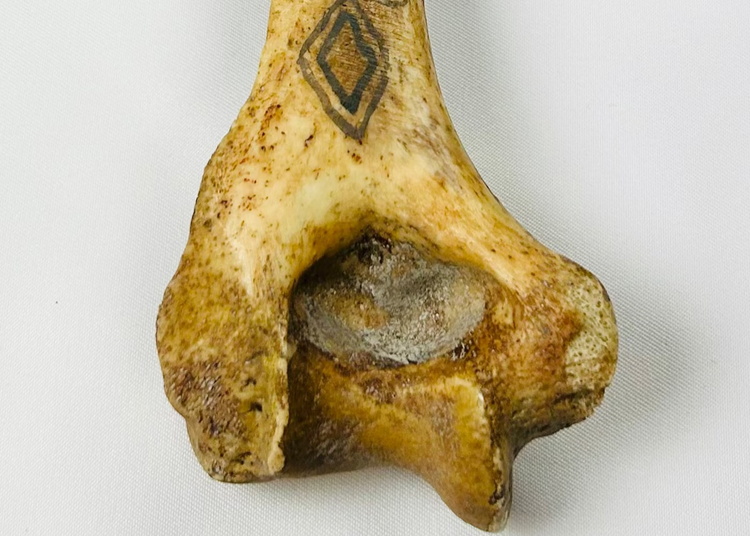New Guinea Highlands Ritual Bone Dagger | Human Femur with Pigment & Feathers | 19th Century
Description
More
Less
Historical Context & Origin
Region: New Guinea Highlands
Material: Human femur (later tradition also cassowary bone) with natural pigment decoration and feather embellishments
Period: 19th Century
Description
A rare and culturally significant New Guinea “husband-killing dagger,” traditionally carved from a human thigh bone and employed in acts of ritual justice. In highland societies, these daggers could be used by a wife—often assisted by her brother—to exact vengeance upon a husband who had violated sacred social codes, including infidelity or betrayal.
This example, measuring 13.75 inches, shows careful shaping of the bone into a tapered, lethal form, with geometric curvilinear motifs painted in natural pigments. Feathers, likely from the cassowary, remain attached as embellishments, heightening the object’s spiritual resonance. The dagger stands as both a functional weapon and a symbol of kinship, justice, and the cosmological order within New Guinea highland communities.
Features
- Carved human femur, sharpened and shaped as a ritual dagger
- Painted geometric designs in natural pigments
- Cassowary feather embellishments for spiritual potency
- Strong ritual associations with gender roles, kinship, and tribal justice
- Well-preserved ethnographic artifact with striking presence
Cultural Significance
Bone daggers of this type embody New Guinea’s intricate social and spiritual codes. Beyond their use as weapons, they were objects of ritual legitimacy, often carved by a wife’s brother to reinforce communal justice. The eventual transition from human femur to cassowary bone reflects the symbolic power of the cassowary—an animal revered for its strength and connection to ancestral spirits. These daggers thus encapsulate both justice and cosmology, serving as rare survivals of indigenous legal and ritual practice.
Condition
Excellent condition with natural patina, preserved pigment decoration, and surviving feather embellishments. Minor wear consistent with handling and ritual use. No modern restoration.
Dimensions (approximate)
Length: 13.75 in
Age
19th Century, New Guinea Highlands
Learn More
Read More About New Guinea Bone Daggers
See Similar Artifacts at The Timothy S. Y. Lam Museum of Anthropology
Explore Our Other Human Bone Artifacts: Ancient Tibetan Kapala Skull Cap and Pair of Rare Large Tibetan Kapala Citipati Beads
Description
Historical Context & Origin
Region: New Guinea Highlands
Material: Human femur (later tradition also cassowary bone) with natural pigment decoration and feather embellishments
Period: 19th Century
Description
A rare and culturally significant New Guinea “husband-killing dagger,” traditionally carved from a human thigh bone and employed in acts of ritual justice. In highland societies, these daggers could be used by a wife—often assisted by her brother—to exact vengeance upon a husband who had violated sacred social codes, including infidelity or betrayal.
This example, measuring 13.75 inches, shows careful shaping of the bone into a tapered, lethal form, with geometric curvilinear motifs painted in natural pigments. Feathers, likely from the cassowary, remain attached as embellishments, heightening the object’s spiritual resonance. The dagger stands as both a functional weapon and a symbol of kinship, justice, and the cosmological order within New Guinea highland communities.
Features
- Carved human femur, sharpened and shaped as a ritual dagger
- Painted geometric designs in natural pigments
- Cassowary feather embellishments for spiritual potency
- Strong ritual associations with gender roles, kinship, and tribal justice
- Well-preserved ethnographic artifact with striking presence
Cultural Significance
Bone daggers of this type embody New Guinea’s intricate social and spiritual codes. Beyond their use as weapons, they were objects of ritual legitimacy, often carved by a wife’s brother to reinforce communal justice. The eventual transition from human femur to cassowary bone reflects the symbolic power of the cassowary—an animal revered for its strength and connection to ancestral spirits. These daggers thus encapsulate both justice and cosmology, serving as rare survivals of indigenous legal and ritual practice.
Condition
Excellent condition with natural patina, preserved pigment decoration, and surviving feather embellishments. Minor wear consistent with handling and ritual use. No modern restoration.
Dimensions (approximate)
Length: 13.75 in
Age
19th Century, New Guinea Highlands
Learn More
Read More About New Guinea Bone Daggers
See Similar Artifacts at The Timothy S. Y. Lam Museum of Anthropology
Explore Our Other Human Bone Artifacts: Ancient Tibetan Kapala Skull Cap and Pair of Rare Large Tibetan Kapala Citipati Beads
You May Also Like






















